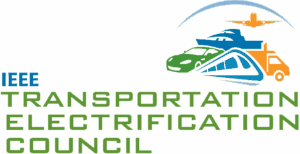Articles should be prepared according to the following guidelines:
- All articles must be exceptionally professionally written using active voice. While it is a technical magazine and technical terms can be used (such as “induction machines”), no equations/formulas or overly complex explanations should be included. The magazine articles need to adhere to the adage “if it cannot be said in words, it does not belong in a magazine article.” A first-year engineering student or a non-technical person familiar with the electric power industry (attorney, marketer, economist, regulator, etc.) should be able to understand at least 80% of every article.
- All components of the article should be included in a Word document (e.g., body of the article with corresponding sections/subsections, figures, figure captions, tables, sidebars, if any, a For Further Reading section, and brief author biographies as described below). All graphics (figures, tables, etc.) should be placed in their desired location within the body of the article.
- All of the authors should be listed in the author line; each should be aware that they have been listed as an author.
- The text should be in a single column as opposed to the double-column formatting found in Transactions papers.
- Articles are limited to approximately 5000 to 6000 words (including graphics).
- Articles must be accompanied with approximately 6–8 figures including tables, graphics, photos, screen captures, etc. to enhance their content. The figures must be of high-quality resolution.
- Authors need to obtain permission for any material that they are using in their article but have not created, a figure for example. Some authors believe that because the figure is available on the Web, they can use it without obtaining permission to do so, but that is not the case. If any figures in the article have been used from other sources, it is the author’s responsibility to obtain written permission from the original sources to reprint them and the original source must be cited in the caption (Source: xxxx; used with permission.). Permission is not needed to print figures that have been generated based on the data of another source, but a note must be included in the caption (Figure based on data from source xxxx.).
- Acronyms should only be used if the term is used more than four times per article. Spell out the acronym each time if used fewer than four times.
- Articles cannot contain abstracts, keywords, or references.
- Reference lists are not allowed. However, a “For Further Reading” section of no more than 6 entries is required (self-citations by authors must be limited to no more than 2). The entries should be readily available publications, and live links should be included whenever possible. The correct formats for citations of various types of publications can be found in the IEEE Reference Guide.
- Articles can be structured using sections and subsections as needed.
- Avoid commercialism of materials. Mention of corporate names and company specific projects should be severely limited. Similarly, avoid repeating the mention of a country too many times, especially in an evaluative way. (Not good: Brooklyn remains the premier location for the outstanding Brooklyn cuisine, which is thoroughly enjoyed by Brooklynites and non-Brooklynites alike.)
- The last section, “Biographies,” includes a one-line bio for each author (name, e-mail address, affiliation, and country).
Upon Acceptance
If your article is accepted for publication, you will be required to submit the following material:
- The source file for the final version of the article in Word or LaTeX format (be sure to include the names of all of the authors)
- The final version of the article in PDF format (the PDF must match the source file)
- A separate source file for each figure in jpg, gif, tif, or eps format with a resolution of at least 300 dpi (name each file according to its relationship to the article, e.g., fig1.eps, fig2.tif, etc.)
- The name, mailing address, and phone number of the corresponding author.

